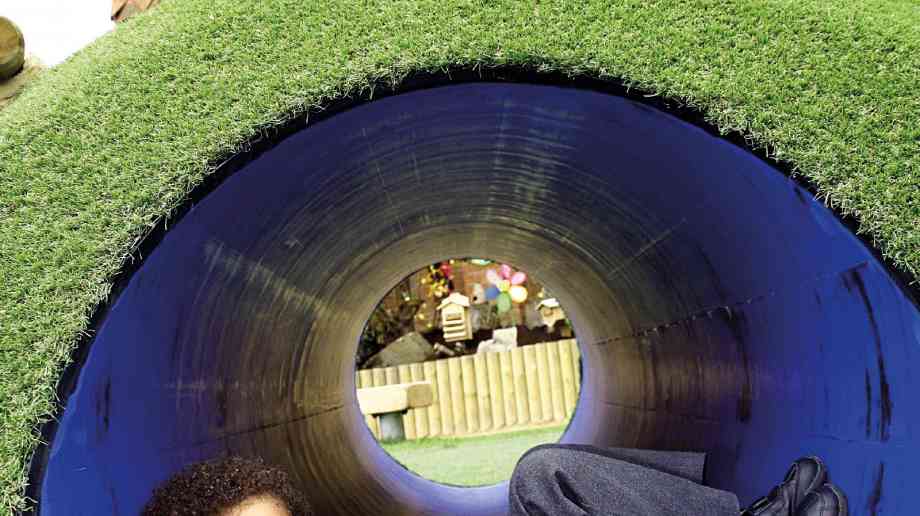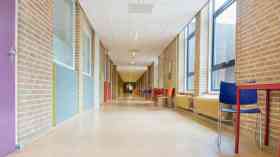Established in 1981, Micro Computer Consultants Limited (MCC Digital) are one of the UK’s most experienced Apple Authorised Education Speci

Why active schools need great outdoor facilities
Obesity is quickly becoming a dangerous problem for many children. Mark Hardy, chair of the Association of Play Industries, who campaigns for policy recognition of the value of play, discusses why schools are the ideal playground for the younger generation to become more active.
You don’t need us to tell you that we’re in the middle of an obesity and physical inactivity crisis. It threatens to shorten children’s life expectancy and presents an overburden on the NHS. With the government’s National Obesity Framework delayed until the summer, there are widespread concerns that government momentum on this vital issue is waning.
Bold and brave policy measures are what’s needed to tackle this problem, and funding and resources for schools, local authorities and organisations like Sport England to ensure every child is active across every aspect of life. Evidence shows that those in lower socio-economic groups are more likely to be obese, overweight and physically inactive so that’s where the policy priority should be, we believe.
The Association of Play Industries (API) campaigns at the highest levels for policy recognition of the value of play. We do this because the government is yet to acknowledge the vital importance of play in creating positive early experiences of physical activity for children. Being physically active is a habit, and starting that habit in children’s earliest years is likely to entrench healthy, active behaviours in adulthood which improve health and well-being, and, in turn, reduce the burden on the NHS.
Tackling physical inactivity
The role of schools in creating early positive physical activity experiences is vital. API members have been working closely with schools, academies and early years settings for decades to create exciting spaces for active play, outdoor learning, sport, PE and physical activity. Our members are the UK’s leading play companies and are play professionals. Their expert design teams create playgrounds, outdoor classrooms, garden and grow areas, fitness trails and tracks, multi-use sport and games areas, and other outdoor facilities.
At a time when physical inactivity poses as big a threat to public health as smoking, it’s hugely important that children have time, space and opportunity to be active. If we are serious about tackling the root causes of these growing health crises, then every school should be able to provide well-designed, high‑quality outdoor facilities. Of course school budgets are under major pressure, but the relatively low capital cost required to improve a school’s play and outdoor space delivers physical and developmental benefits as well as improvements in classroom behaviour and attitudes to learning.
Play matters
To improve child health and well-being and encourage active habits for life, we must look for wide-ranging solutions which engage children of all ages and abilities.
While sport and PE are vitally important, they cannot be the only antidote to sedentary lifestyles amongst children.
The rigid rules and rituals of competitive sport can alienate some children which can discourage participation and physical activity in adult life.
We campaign vigorously for recognition of the value of play because the evidence of its benefits is irrefutable. Research organisations, academic institutions, play campaigning organisations, education and health organisations, amongst others, have vast amounts of evidence showing that active play delivers physical, developmental, emotional, behavioural, social and environmental benefits to children and communities.
We also know that every child has a fundamental right to play, as set out in article 31 of the United Nations Convention on the Rights of the Child. But with local authority play budgets dwindling, there are many children for whom that right is under threat. A Freedom of Information investigation by Children and Young People Now magazine in 2013 found that 31 per cent of local authorities closed public playgrounds between 2010 and 2013 and cut spending on play by 38.8 per cent during the same period (£67.9 million in 2010/11 – £41.5 million in 2013/14 ).
Research by the API last year found that over half (56 per cent) of parents are unhappy about the lack of high quality play facilities in their local area, with nearly four in ten (38.1 per cent) worried that playgrounds in their local community may close down altogether. Six in ten (61.4 per cent) think the government should be doing more to provide funding for schools to improve their outdoor facilities for physical activity.
A Fit and Healthy Childhood
Last autumn, the All Party Parliamentary Group on a Fit and Healthy Childhood made a clarion call to put play at the heart of government policy on child health and well-being, and to adopt a holistic strategy to support child development. At the report’s parliamentary launch, the group’s co-chair, childrens’ advocate Baroness Floella Benjamin, called on politicians from all parties to acknowledge the vital role of play in childrens’ lives and particularly in helping tackle the physical inactivity crisis.
Key recommendations for government in the report that won API support were: for play to be embedded within a Whole Child Strategy under the aegis of a Cabinet Minister for Children responsible for cross‑departmental roll out and co-ordination; for government to require local authorities to prepare children and young people’s plans including strategies to address overweight and obesity with its physical, mental and emotional consequences; for funding for play to be ring-fenced within local authority budgets; to address barriers to outdoor play for children of all ages and abilities; to extend the Sport England Primary Spaces and Sport Premium programmes to all schools with a broader scope to incorporate a wide variety of physical literacy activities including play; to communicate through public information campaigns to parents and families the value of active outdoor play, including risk or benefit assessment; and to improve public sector procurement practice for public play provision.
I was delighted to represent the play industry at a recent meeting between Baroness Benjamin and NHS Productivity minister Lord Prior to discuss the report’s recommendations, and hope we will see a more prominent place for play in government policy – and particularly, within the National Obesity Framework - in the future.
Another important organisation working hard to fund much-needed initiatives that encourage young people to be more physically active is Sport England. API members have played an important part in delivering Sport England’s Primary Spaces initiative which has seen outdoor facilities improved in hundreds of primary schools to provide new spaces for games, PE, sport, outdoor learning and play.
As an active member of the APPG, the Children’s Play Policy Forum and Federation of Sports and Play Associations, we believe it is time for the government to move play up the political agenda and to appoint a policy lead on play to develop and adopt a national play strategy.
Advice for schools
For schools wanting to become more active, it can be difficult to know where to turn for advice. The API is here to help. Its new Schools Get Active online hub is packed with helpful tips and information about planning improvements to play and outdoor facilities, fundraising, design and risk, plus inspiring school case studies designed and installed by our members.
By choosing an API member company, schools can be sure they will be working with a reputable, financially stable and experienced play partner who abides by a Professional Code of Conduct and understands the education world.
Here are some great reasons why it pays to get your school’s outdoor facilities in shape.
Children of all ages learn through play. Learning through play is a Trojan Horse for all the learning experiences that will follow in a child’s school life. Without even realising, children develop knowledge, skills and lessons for life, from confidence and endurance to communication and leadership. It’s not just your Early Years classes that will benefit from learning through play. Providing time, space, opportunity and a positive attitude to play benefits children of all ages.
Physical activity boosts concentration, learning behaviour and mood. Children have natural energy and enthusiasm so make the most of it by building physical activity into the whole school day. Use your playground and outside spaces to get children moving during lesson time, break and lunch times, before and after school, and for extra‑curricular activities, as well as during sport and PE lessons. It’s not just physical literacy levels that you’ll see improve by updating your outdoor facilities. Schools report improvements in behaviour and well-being too.
School is the only safe place for some children to play. For children in some socially deprived communities, school may provide the only safe outdoor place to play and be physically active.
There’s government funding to improve school sport and PE provision. The Primary PE and Sport Premium is designed to help schools improve the quality of sport, PE and active play they offer, and to maintain those improvements.
Outdoor play equipment promoting physical activity and movement skills is eligible for this funding.
Open your facilities outside of school hours. Many communities lack high-quality facilities for sport and physical activity. Opening your physical facilities to clubs and the local community outside the school day raises the profile of the school within the community while generating an additional income stream.
Further Information
www.api-play.org/schoolsgetactive
Latest News
30/04/2024 - 09:52
A free new self-assessment quiz for teachers and school staff on the government's Prevent Duty has been launched by edtech charity LGfL–The National Grid for Learning.
30/04/2024 - 09:36
In the survey by school leaders’ union NAHT, more than nine in ten school leaders say they have had to raise funds from sources like charity grants and fundraising to cover basic costs.
29/04/2024 - 11:56
Ofsted has said that schools with RAAC present will be able to defer inspections this summer term
29/04/2024 - 10:01
The Education Committee has launched a new inquiry into some universities’ reliance on revenue from international student tuition fees and whether this is sustainable.
26/04/2024 - 11:43
Conservative and Labour groups of Bexley Council have agreed to support LGBTQ+ education for young people in all state schools across the borough.
Supplier Focus
Latest Supplier News
Borg & Overström is a UK manufacturer of premium drinking water solutions. For over 20 years Borg & Overström has developed sustainable, bottle-less, hygienic, drinking water dispensers with the aim to provide exceptional, safe, self-service drinking water into schools, universities, workplaces and communal spaces.










